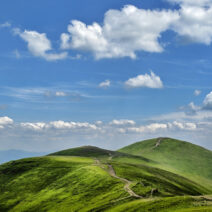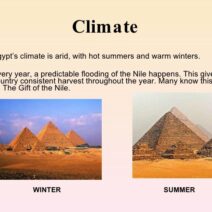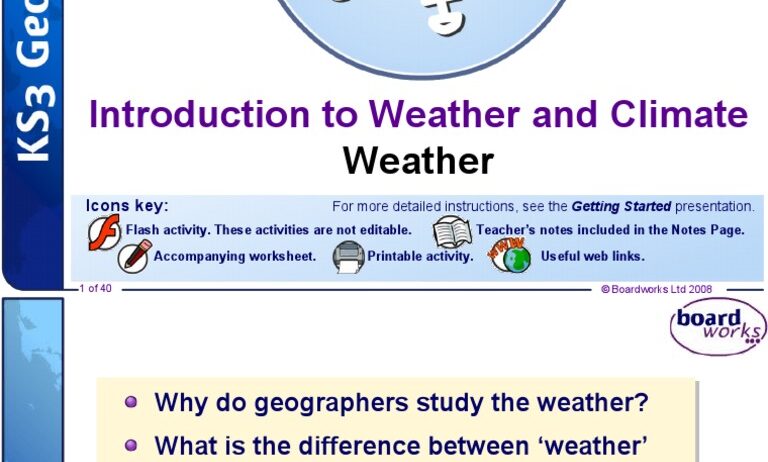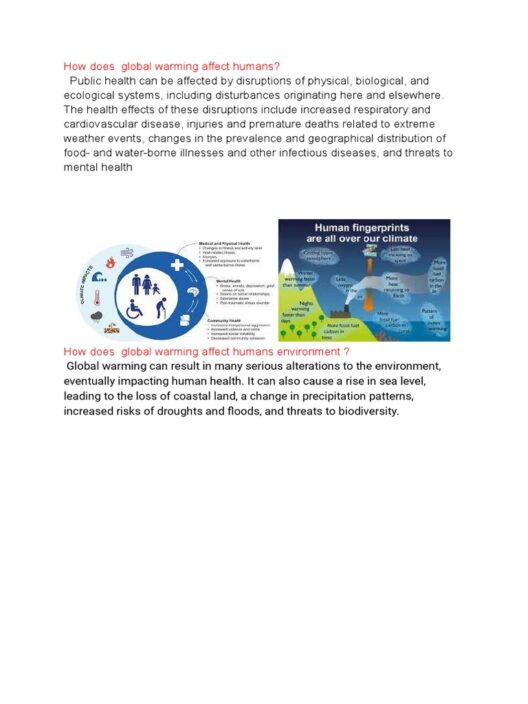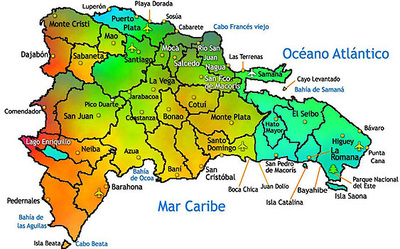Understanding weather and climate is akin to marveling at an artist’s palette—each hue representing a different phenomenon, blending together to shape our environment. Although they are often used interchangeably in everyday conversations, the nuances between weather and climate are crucial for comprehending their broader implications on Earth’s ecosystems, human activities, and ultimately, our very survival.
Weather, in its transient glory, can be characterized as the atmospheric conditions at a specific place and time. Imagine weather as the mood of the planet, shifting rapidly like an actor taking center stage—sometimes jubilant with sunshine, and other times brooding with dark clouds and storms. It encompasses a range of elements including temperature, humidity, precipitation, wind speed, and atmospheric pressure. Just as a mood can change from euphoria to melancholy in moments, so can weather, altering from sunny to stormy in mere hours.
To encapsulate weather’s ephemeral nature, one might consider the daily forecast presented each morning. These updates provide a glimpse into what is to come through the lens of meteorology. Meteorologists play the role of interpreters, deciphering the complexities of ever-changing atmospheric conditions through advanced technologies such as satellite imagery and radar. They predict weather patterns, offering invaluable information that can safeguard lives and properties.
In stark contrast, climate can be understood as the long-term narrative—the overarching storyline that unfolds over decades and centuries. It is as though climate serves as the book from which the tales of weather are drawn. The climate of a region encompasses the average conditions and variations over extended periods, typically spanning 30 years or more. This includes data about temperatures, precipitation levels, winds, and other elements that define what one can generally expect in a particular locale at different times of the year.
Physical geography plays a significant role in influencing a region’s climate. For instance, coastal areas often experience temperate climates due to the moderating effect of the ocean, whereas inland areas can develop extreme temperature variances. The towering granites of mountain ranges can create rain shadows, where one side basks in moisture while the other languishes in aridity. These variations weave a complex fabric of climate zones—tropical, arid, temperate, polar—each interdependent yet distinct, reminiscent of a rich tapestry that illustrates Earth’s diverse landscapes.
Delving further into the topic, it is crucial to highlight the influences of human activity on climate. As industrious creatures, humans have altered the planet’s surface and atmosphere in unprecedented ways. The combustion of fossil fuels, deforestation, and industrial emissions have aggravated the greenhouse effect, a natural phenomenon that traps heat in the Earth’s atmosphere, leading to global warming. This relationship between human actions and climate evolution is akin to a maestro directing an orchestra; every action creates a vibrant harmony or dissonance, echoing through generations.
Climate change—a term that has entered our lexicon with increasing urgency—refers to long-term shifts in temperature, precipitation patterns, and other climate variables. It is a testament to humanity’s impact on the environment and bears significant consequences for ecosystems and societies alike. The reality of climate change illustrates that the mere act of living is entwined with our planet’s health. It can appear as rising sea levels threatening coastal communities, more severe weather events like devastating hurricanes, or shifts in agricultural yields that challenge food security worldwide.
As we unravel the threads connecting weather and climate, we must also consider their interrelatedness. Weather events can serve as microcosms of our evolving climate. For example, an increase in extreme weather events is an indicator of climate instability. Similarly, fluctuations in weather patterns can expose vulnerabilities in our climate systems. Consequently, understanding weather is critical for comprehending the broader climatic shifts that define our era.
Another essential aspect to recognize is how societies grapple with climate variability. Communities utilize both traditional knowledge and scientific models to cultivate resilience in the face of climate change. Adaptation strategies—ranging from constructing infrastructure capable of withstanding unexpected floods to implementing sustainable farming practices—are indispensable. These strategies reflect humanity’s capacity to innovate and respond proactively to climatic challenges. Just as nature possesses an intrinsic adaptability, so too shall the human spirit.
Education plays a pivotal role in fostering awareness and action around climate issues. By elucidating the differences between weather and climate, we empower individuals to make informed decisions that impact their environments. Knowledge helps in nurturing a sense of responsibility towards collective action, igniting movements that inspire civic engagement, and advocacy for policies aimed at sustainability and climate justice. Every informed citizen becomes a brushstroke in the broader mural of change.
In the journey toward a more symbiotic relationship with our planet, it becomes evident that both weather and climate are fundamental elements of our daily lives, transcending mere academic concepts. They are dynamic forces that influence everything from our agriculture to our urban development, impacting the intricate web of life on Earth. Thus, as we navigate these complexities, our understanding and stewardship foster hope for a sustainable future—a commitment to living harmoniously within the limits of our planet, not at odds with it.
